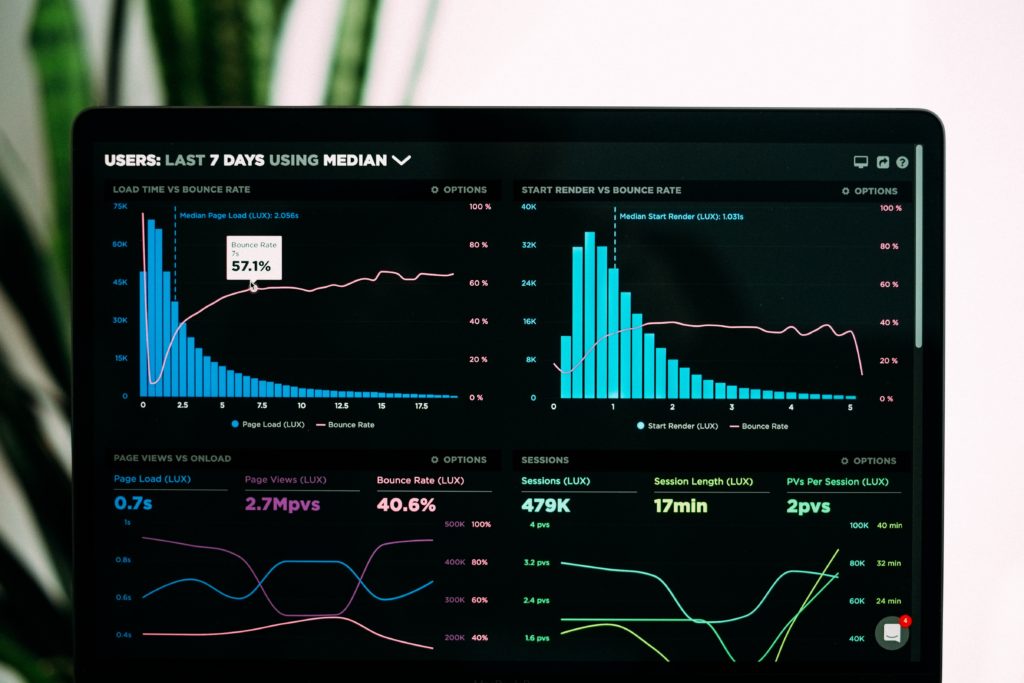
Data representation using graphics such as charts, plots, infographics, heat maps, bubble clouds, scatter plots, mekko charts are referred to as data visualization. Such visual displays and representations of information help communicate complex data relationships and data-driven insights in a way that makes it easy to understand and base decisions on.
The goal of data visualization is to assist in identifying patterns and trends from large data sets. The data refers to processing the immersive & interactive visualizations that display the fresh data as it streams in. There’s a huge volume of data available today, and to derive any benefit from such abundant data, real-time analytics has become extremely necessary for businesses to gain an edge over their competition. Real-time visualizations can be very helpful to businesses that have to make strategic decisions or take decisions on the go.
It is helpful to companies who need to deal with risk by managing and responding to it if and when something goes wrong. And for those companies who can use these real-time visualizations to take advantage of emerging opportunities before someone else does. Real-time visualizations work the best where action based on inputs has to be taken immediately by providing context to the decision-makers.
Business benefits of data visualization
Information processing. With a constant stream of data generated in real time, it’s impossible to process and make sense just by looking at it. Visualization helps in making sense of the clutter of numbers and text in a better way. It’s also easier to absorb and interpret data when it’s presented visually.
Relevant insights. Data visualization gives relevant insights by connecting and showing patterns of how different data sets are connected. This can help identify and extract trends and patterns that would otherwise not be visible from the raw data. This is especially important when streaming data is presented, and trends can be forecasted using such real-time visualizations.
In financial business systems, real-time data visualizations can show real-time ROI, profits, and losses and help businesses make immediate decisions.
Business operations, Data visualizations offer businesses an overview of the current relationship between various sections and operations of the business. It aids the decision-making process and manages critical business metrics. It can help in reviewing and analyzing areas for improvement.
Decision making. The pattern becomes clearer with data visualization making it easier to make faster decisions. Since there is a sync between the real-time data and its visualization, businesses can make prompt decisions which can significantly impact the organization.
Customer analysis. Real-time data visualization helps analyze customer data to understand the trend for the business. It can reveal insights into understanding and knowing the target audience, their preferences and more. Such insights can be useful in designing strategies that can address customer requirements.
Saves time. Its easier to understand, process, and make decisions based on graphically rendered data rather than go through tons of reports with raw data and generate reports on time. Real-time data visualizations help save time by categorizing and showing trends and patterns in real time.
Data interaction. Data visualization helps group and categorize data and encourages employees to spend time in data interaction through data visualization. This leads to better ideas and helps in problem-solving. It helps in designing and creating actionable business solutions.
Real-time data visualization provides additional context for decision-makers who need to respond immediately when dealing with risk and for businesses who need to take prompt decisions before an opportunity is lost.
Some of the use cases for real-time data visualizations are;
- Identifying trends. Sales and marketing companies rely on trends and identifying spikes or disruptions in a visual format using real-time data visualization to help make decisions.
- Goal monitoring. Using real-time data visualization, goals and results can be monitored as they are achieved and steps can be taken for correction in case they are not met.
- Accessing data displays remotely. Sales managers and their teams need instant access to CRMs in the field. Real-time data visualizations can help connect and give the required details on mobile devices for making decisions.
- Purchase. Real-time data visualization can show market trends which for companies dealing in commodities can be extremely helpful. Graphical representation can show the movement clearly.
- Resource management. Real-time visualization can show efficiencies and inefficiencies and aids organizations take effective remedial decisions in case of problems.
- Security and fraud prevention. Real-time data visualizations provide an opportunity for risky situations and reduce day-to-day operational problems by pulling data from different sources and projecting such data in graphical forms in one place.
- Crisis management. Real-time data visualization aids in handling risks by showing real-time analytics of any emergent events.
Conclusion
Data is the key to decision-making in any business. Aiding the decision-making process by actively representing real-time data using different real-time visualization and representation methods can give the business a competitive advantage.
